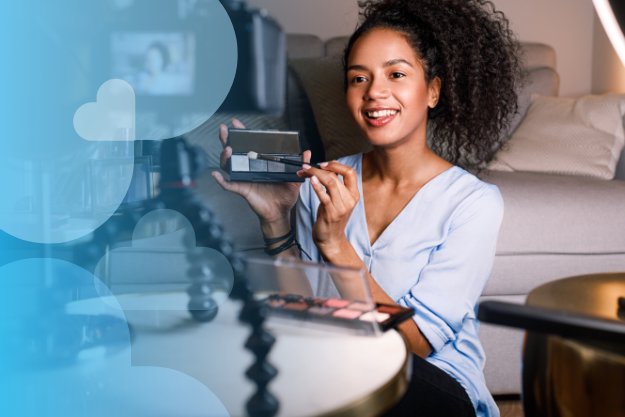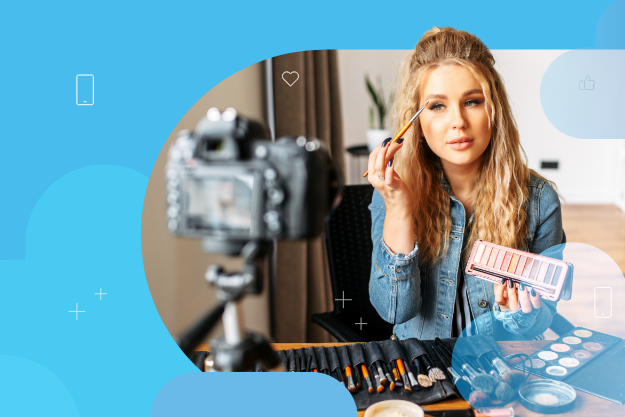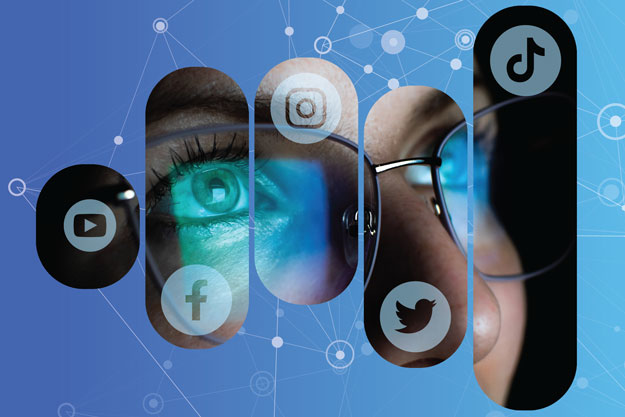Both influencers and brand ambassadors are active on social media, promoting brands to help extend their customer base and generate sales. While the two types of content creators may seem similar on the surface, there are some key differences when it comes to a brand ambassador job description.
If you’re looking to break into the world of content creation and sponsored posts, becoming a brand ambassador can be a great starting point. While an ambassadorship is valuable to boosting your social media strategy as a creator and monetizing your online presence, it can also be a stepping stone to becoming a larger-scale influencer. After all, 80% of influencers regularly use the products they promote on social media.
This article covers brand ambassador job descriptions to equip you for the process — from outreach and brand discovery all the way to launching campaigns.
Who is a brand ambassador?
A brand ambassador is defined as “a person who a company hires to promote its products or services.”
In short, they are individuals who already love a brand’s product and want to help increase brand awareness and sales through word-of-mouth marketing, instead of solely relying on Instagram or TikTok marketing posts.
As a brand ambassador, you don’t necessarily have to have a million followers on social media, but you should be passionate about the brands you’re interested in working with, and have built an engaged online community through social media. As long as you’re committed to spreading the word, you can be an excellent brand ambassador even if you haven’t collaborated with a brand in the past.
As a brand ambassador, you might receive free products or services in exchange for your promotional efforts. But more importantly, you believe in the product or service and want to help the company you partner with succeed.
Brand ambassador job description
As a brand ambassador, your primary focus is on promoting the product or service to customers through personal interactions. This might look like:
Attending events and tradeshows
Hosting meetups and workshops
Giving speeches or presentations
Engaging with the brand on social media platforms
Writing blog posts or articles
Creating YouTube videos or podcasts
However, the most common way brand ambassadors spread awareness about services and products is via social media. Instagram and TikTok are major players when it comes to these sponsored posts. By sharing your own unique content on these platforms and essentially becoming a face of the brand, you’re an asset to help the brand drive sales.
Before you start reaching out to brands or connecting with them via influencer marketing platforms as an ambassador, make sure you’ve built a social presence. While you don’t have to have tons of followers to start, you should have your own style and flair that comes through your existing social posts.
Brand ambassadors can represent companies in a variety of industries, not just apparel and cosmetics. Brands typically work with ambassadors to create a diverse group of individuals who can reach different audiences to support their products.

What's the difference between brand ambassadors and influencers?
Now that you have a grasp of a brand ambassador job description, let’s discuss how they differ from traditional social media influencers. This is important to determining what type of creator you strive to be on social media, and how your goals align with ambassadorships.
Scope of work
An ambassador is hired by a company to represent them and their products or services. They are usually given a wider scope of work that goes beyond creating social media content. This might include attending events, distributing product samples, or writing blog posts.
On the other hand, an influencer is defined as “a person with the power to influence the buying decisions of others because of his or her authority, knowledge, position, or relationship with the consumer.” Influencers typically work with a variety of brands and primarily collaborate on more involved content campaigns.
Compensation
Brand ambassadors are usually compensated with free products or services in exchange for their promotional efforts. This doesn’t mean that some are compensated with cash, but more importantly, they believe in the product or service and want to help the company succeed.
An influencer is someone who is paid to promote a product or service. They might be given free products or services, but they are more typically compensated with money in exchange for their promotional efforts. Because influencers are often more costly, the brands you like may be more open to working with smaller-scale ambassadors.
Audience size
An ambassador doesn’t necessarily need a large audience to be effective. They just need to be passionate and have a strong voice within their community. You can be a brand ambassador with under 1,000 followers on Instagram, for example, so long as your friends and followers interact with your posts.
An influencer, on the other hand, is defined by their reach or audience size. They typically have a large following on social media or are considered an expert in their field.
Content focus
A brand ambassador’s content is focused on promoting the product or service through personal interactions, often sharing their unique experiences with a product or service.
While they can share similar experiences, an influencer’s content is focused on sharing their thoughts and opinions with their audience. It’s not always about directly promoting a product or service.
Relationship with the brand
Brand ambassadors represent a company as an official spokesperson and promoter of its goods, services, or image. They have a close and long-term relationship with a brand or two, instead of engaging in one-off campaigns with a variety of brands.
An influencer may have more distant relationships with the brands they promote. They may be hired to share one post about a product, and then compensated, rather than maintaining an ongoing relationship with the brand.
So, which one is better for you? It all boils down to your own goals.
Brand ambassadors are a better fit if you’re breaking into the brand partnership scene, and have an idea of one or two brands you’d love to collaborate with. Becoming an influencer might be a better option if you’re looking to work with a variety of brands, and have a higher volume of social media followers.
However, the line between influencers and brand ambassadors often blurs; that’s why micro-influencers have become a popular option for brands in recent years. Becoming a brand ambassador doesn’t disqualify you from later pursuing an influencer career, and vice-versa.
Where to find brand ambassador opportunities
While emailing and DM’ing the brands you love can be a good place to start seeking brand ambassador opportunities, most individuals rely on influencer platforms and creator networks to connect with brands seeking partnerships. You definitely don’t have to consider yourself an influencer to join these types of networks, and they can increase the visibility of your social media profile to brands you may want to work with.
Brand ambassador examples
Let’s take a look at some examples of brands that have worked with ambassadors to improve sales and brand awareness on social media.
1. Morphe
Morphe, a cosmetics company, has an ambassador program that targets Gen Z and/or students. This program is open to any student who loves makeup, is willing to be an activist, and wants to spread the word about Morphe products.

Morphe shares user-generated content from everyday customers as well as influencer-led content, both on social media and on the brand’s website. Brands like Morphe that value various kinds of community-powered social amplification are excellent choices to start your outreach with, as they’re often open to all types of creators..
2. HYLETE
HYLETE, a fitness apparel company, has ambassadors who have experience with fitness and are passionate about helping others reach their fitness goals.
If you’re interested in becoming an ambassador for a specific niche like fitness, you don’t necessarily have to own tons of products to get on a brand’s radar — just show your interest and dedication to helping them succeed.

3. Red Bull
Red Bull is a great example of a brand that uses its ambassadors beyond just social media. While brand ambassadors often do post content around the products with the hashtag #GivesYouWings, they also promote the brand in-person.
Red Bull's Student Marketeer program allows college students to apply online and become brand ambassadors, endorsing the brand through on-campus fairs and even driving the famous MINI Cooper with a giant Red Bull can on top around campus.

4. KiraGrace
Yoga apparel brand KiraGrace maintains a robust brand ambassador program, offering its enthusiastic members products and opportunities to connect around their shared values. The brand also showcases content from ambassadors in an on-site gallery powered by Pixlee TurnTo, offering creators more visibility in general.

Through a dedicated site page for the KiraGrace Ambassador Program, any interested individual can apply to join the crew.
5. LuckyVitamin
LuckyVitamin, a vitamin and supplement company, has an ambassador program called Lucky Ambassador. It's open to health enthusiasts who want to spread wellness and help others live healthier lives.

The bottom line
As you can see, there are many different types of ambassador programs out there. And, each program is designed to fit the needs of the specific company. They all have one thing in common: they allow brands to connect with their target audience on a personal level.
The keys to becoming a brand ambassador are passion and drive. While you don’t have to have a million followers, you should truly love the brand you want to represent, and be open to the different types of ambassador programs out there.
Natasha Rei is the Digital Marketing Manager of Explainerd, an explainer video production agency. She ensures strategic goals are met by directing online and social media campaigns.
Editor's Note: This article was originally published on pixlee.com. Any statistics or statements included in this article were current at the time of original publication.



































